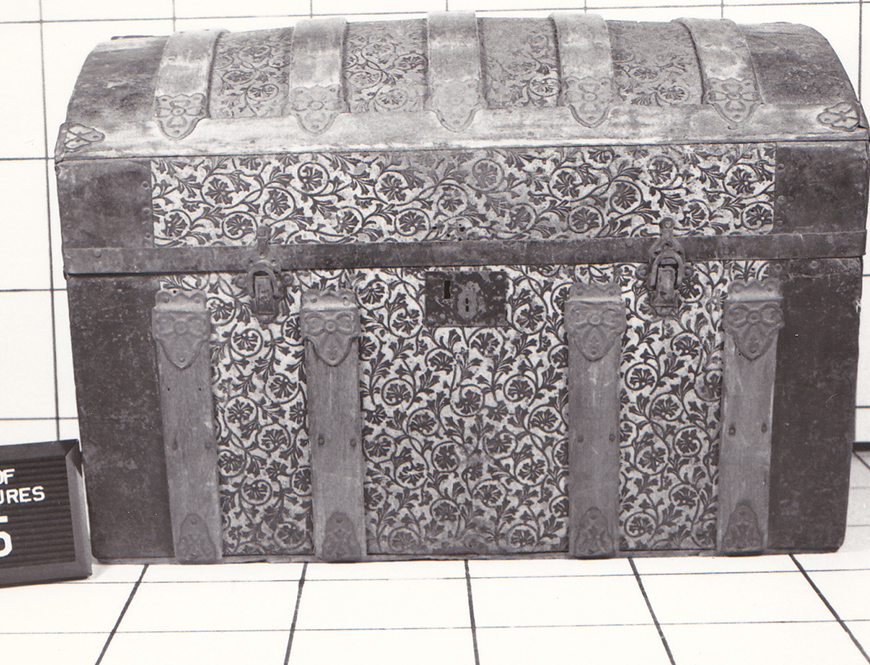This object is an Italian travel trunk that was owned by Pompeo Luigi Coppini, a renowned Italian sculptor. Travel trunks were originally used as luggage for long trips by steamship, train, or stagecoach.
Pompeo Coppini was born in Mantua, Italy in 1870. By the time he was 10 years old, his family had moved to Florence, where Pompeo got a job making ceramic horse-shaped whistles. After that, he worked for a sculptor who made knock-offs of famous artworks for tourists. When he was 16 years old, Coppini studied at the Accademia dell’Arte del Disegno, a world-renowned art and design academy in Florence.
In 1896, Coppini immigrated to the United States with only his trunk of clothes and $40. Almost immediately, he got a job in New York, sculpting figures for a wax museum. Happy with the work, but frustrated with the lack of fame and recognition, Coppini moved to Texas in 1901 to work as an apprentice under the German-born sculptor Frank Teich. Civil War memorial statues had become a popular request, and Teich needed help filling orders. Coppini was commissioned to create a statue of Jefferson Davis and other confederate soldiers, which now stand at the state capitol. Those sculptures were so well received that Coppini decided he could make it on his own, rather than working under Teich for seventy-five cents an hour.
Coppini lived and worked in San Antonio for the next fifteen years. By 1910, he had recruited his own apprentice and “foster daughter”- Waldine Tauch– who he worked with for the rest of his life. Around 1919, Coppini moved to New York, where he oversaw the casting of the Littlefield Fountain Memorial, a centerpiece of the University of Texas campus in Austin.
In 1937, Coppini won the bid to commission the Alamo Cenotaph, also known as the “Spirit of Sacrifice,” a memorial to the heroes of the Alamo. He won out over other well-known sculptors, including Gutzon Borglum, who went on to carve the faces of Mt. Rushmore. To complete the Alamo cenotaph project, Coppini opened a studio in San Antonio, which later became the Coppini Academy of Fine Arts, which is still in operation today. Believing that art training should be a branch of learning at universities, he also became the head of the art department at Trinity University in San Antonio from 1943-1945.
Pompeo Coppini’s work spans multiple countries, but the vast majority of his sculptures can be seen in Texas. His work consists of thirty-six public monuments, sixteen portrait statues, and seventy-five portrait busts. Though his sculptures have elicited some criticism through the years, they stand as a three-dimensional history of our state, and the country.
